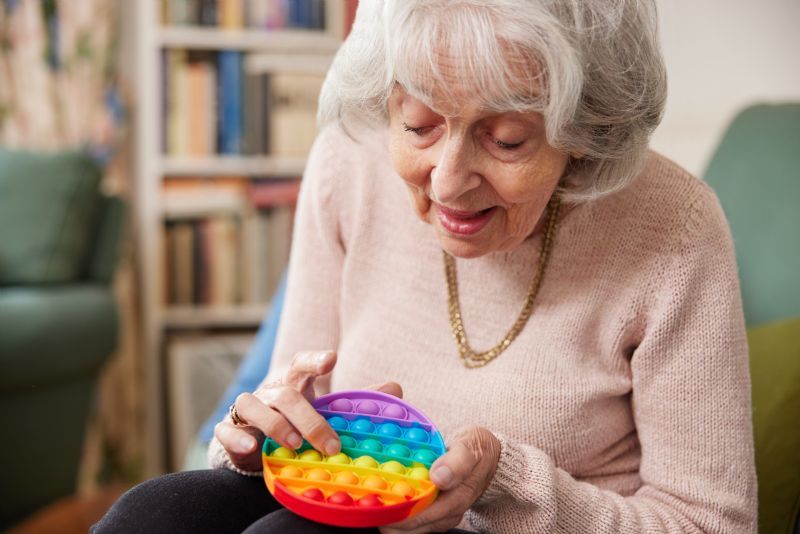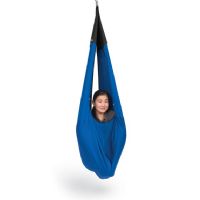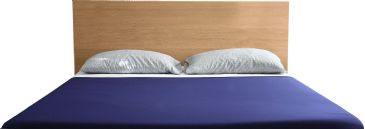 Written by Megan Smith, PT
Written by Megan Smith, PT
At one point or another, many of us have probably used or heard the term “sensory overload” referring to a crowded event, loud noise, or over-fragrant store. But have you ever thought about what it means to overload your sensory system? Our brains are hotbeds for intense electrical activity with approximately 100 billion neurons firing off 5-50 messages every second.
With so much action occurring at once, it's incredible that we can process these signals, formulate thoughts, and respond with appropriate movements. When processing goes awry, sensory overload can occur. Sensory overload refers to one or more of your senses receiving too much information at once. The inputs can be visual, auditory, touch, or olfactory amongst others with each of us carrying unique sensory preferences and tolerances for different amounts and types of sensory input.

Individuals suffering from sensory overload experience a lower threshold for specific triggering inputs. If overstimulated, these people will feel discomfort or stress that can often present in the form of avoidance, poor behavior, or fear. Many think of children when referring to sensory processing disorders, but often these conditions can last well into adulthood. Proper management involves a combination of trigger identification, routine development, and coping strategies that calm the nervous system when overstimulation occurs. Follow along as we differentiate sensory overload in adults versus children and discuss some easy strategies and tools to help manage associated symptoms.
Identifying sensory overload in children can be relatively straightforward, as they are often placed in situations regardless of their known preferences. In contrast, recognizing sensory overload in adults can be more challenging. This is primarily because adults can avoid sensory triggers either knowingly or unknowingly. It becomes second nature as we age and gain life experience to stay away from things that make us uncomfortable. Self-monitoring becomes essential for adults to recognize signs and potential triggers of sensory overload. This may present as an oversensitivity to certain textures, tastes, temperatures, smells, environments, or noises. Paying attention to these cues can provide valuable insights into potential sensory overload in adults and strategies to manage it.
 | ThermApparel Cooling Vest - UnderCool 3.0 | Made in the USA! View Product |
The causes and symptoms of sensory overload in adults closely resemble those experienced by children. However, the methods of identification and coping strategies can vary significantly. Unlike children, adults have higher degrees of autonomy in their activities and destinations, which can positively influence how they encounter and handle sensory overload.
 | Weighted Heating Pad - Medical Grade Moist Heating Pad by PMT View Product |
Because adults have the freedom to make choices for themselves, managing sensory overload symptoms can be effective with a few simple strategies. The first step to treatment is acknowledging triggers and avoiding them as needed. Graded exposure can be beneficial to modulate the brain’s response to the trigger and can be done independently or with the help of an OT. Self-calming exercises can also be therapeutic and include mindfulness, meditation, and deep breathing to soothe an overstimulated nervous system. Finally, addressing the system as a whole through a well-balanced diet and healthy sleep patterns is key to optimizing overall outcomes. Tackling sensory overload is multi-faceted but these simple measures can go a long way in alleviating the challenges experienced and enhancing overall well-being.
 | Fidget Folder Sensory Tool Bundle View Product |
It is difficult to say with 100% certainty but it seems unlikely. Often, individuals diagnosed with sensory overload in adulthood had developed it during childhood but learned to cope with their symptoms over time. Even if symptoms are present, many individuals subconsciously develop self-management strategies or avoidance behaviors in response to previous negative experiences.
 | Adult Cuddle Swing - Cocoon Sensory Therapy Swing for Autism View Product |
Sensory overload is often a component or symptom of a larger underlying condition. Symptoms will never be cured unless the underlying cause is addressed. Generally, treatment is geared at managing the symptoms versus trying to find a “cure”. Once acknowledged, however, effective management can help you regain control of your life and handle triggers more effectively and efficiently.
 | Rotating Star Projector Nightlight 360 Rotating with Battery Power and USB Cable View Product |
Sensory overload can be linked to anxiety or trauma, although it isn’t in all cases. It also can be associated with underlying neurological conditions like ADHD or connected with genetic influence as is often the case in individuals with autism or Sensory Processing Disorder (SPD).
 | Sensory Compression Sheet Blanket View Product |
Sensory overload in adults can limit participation in daily activities and significantly affect their quality of life. Employing even a few simple strategies can improve symptom management and enhance an individual’s overall well-being for years.
If you or someone you love is looking for tools to help them manage their sensory overload symptoms, check out the entire listing of products here. While you’re there, feel free to explore Caregiver University: our expert-curated collection of blog posts and informational buying guides to help you make the most informed medical buying decisions.

Megan has been a part of Rehabmart since its inception nearly 20 years ago. For the past several years she has been enjoying her role as HR Director while maintaining her Physical Therapy license. When she isn't working on her next in-service or working to find a new team member, she enjoys her five children, helping those who have PT type ailments, baking, practicing yoga, and working out.